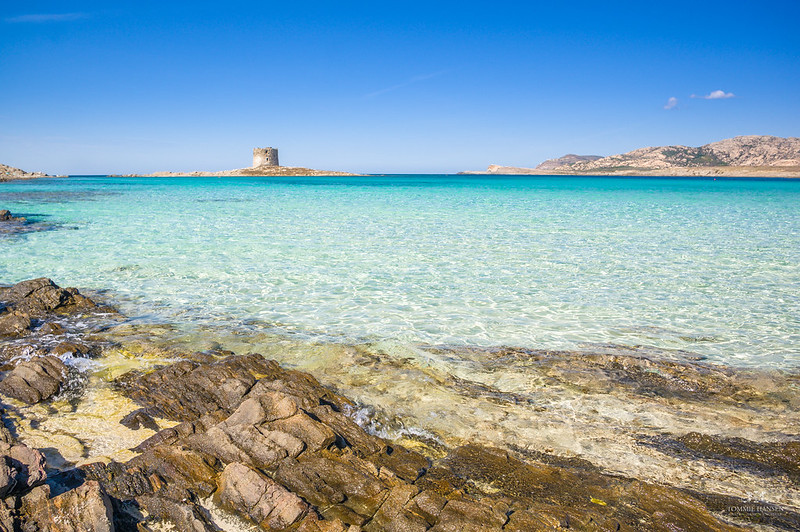
Sardinia Facts
- This breathtaking creation of time and geological processes most frequently goes by the deceptively simple name of Sardinia. It does have a few other titles, though, in other tongues. These include the monikers Sardigna, Sardenya, Sardhigna, and Saldigna.
- Each of these similar yet different titles, however, represent versions in the traditional languages of several small populations within select regions within the greater area. At least separate such local tongues exist, though they’re all gravely endangered.
- Archaeological evidence indicates a human presence on the island dating back to the end of the Paleolithic, or Old Stone Age. These findings therefore place the first human knowledge and use of the site at somewhere between 20,000 – 10,000 years ago.
- The indigenous Nuragic civilization ruled it flourished there from the 18th century BC to the 6th century AD. The Romans subsequently conquered and ruled it for several centuries. During the Middle Ages, however, the Vandals and Byzantines held it.
- Today, magnficent Sardinia ranks as one of the loveliest islands in its entire region. The site’s also the second-largest island in its part of the world. It’s additionally widely respected for its incredible variety of ecosystems contained within its borders.
Related Articles
Sardinia Physical Description
The stunning Sardinia captivates most of those fortunate enough to visit the amazing site. It does so, however, due to more than just its sheer beauty, impressive though that is. That’s because this natural marvel also contains some impressive physical attributes.
The island possesses a roughly rectangular shape. In length, the wonder measures approximately 170 mi (270 km). Its width, though, reaches only 90 mi (145 km) at its greatest point. These further provide it with a total area equaling about 9,300 sq mi (24,090 sq km).
The high degree of irregularity of its outline also provides this geological masterpiece with yet another remarkable statistic. That pertains to its beautiful shoreline. Given the existence of this pattern, the island has a total coastline measuring 1,149 mi (1,849 km).
As a general principle, the majority of this coastline has a rugged, high, rocky structure. Mixed in with this characteristic, however, are numerous comparatively straight sections of beaches. Multiple small inlets and a handful of relatively broad, deep bays also appear.
Yet, Nature isn’t finished with Sardinia. That’s true since the site also contains many quite respectable mountains. Punta La Marmora, the highest point on the island, sits in the middle part of the island. It stands 6,017 ft (1,834 m) tall. Other, though shorter, one’s also exist.
The formation additionally contains multiple rivers, though only a few of them qualify as major. The longest holds the name of the Tirso. It measures 94 mi (151 km) in length. Only one natural freshwater lake exists, along with many shallow saltwater lagoons and pools.
Sardinia Location, Formation, and Ecology
The mesmerizing Sardinia formed in a region of the earth’s surface well known for its abundance of geological marvels. Due to that, it exact location probably won’t surprise many people. That’s because Nature situated the island in part of the Mediterranean Sea.
Within that greater range, however, it sits of the western coast of Italy, in Europe. Its geographical placement also puts it north of Tunisia, and south of the island of Corsica, a part of France. In fact, the two islands sit only about 132 mi (213 km) apart at their closest.
Intriguingly, unlike the nearby mainland, it’s not prone to earthquakes. It’s comparatively stable, due in large part to the nature of its origins. Those date back to a period roughly 500 million years ago. This action occurred due to tectonic action, rather than volcanic.
That action thrust an enormous outcropping or rock, chiefly composed of granite, basalt, and sandstone, up from the seafloor. The slow yet inexorable process of erosion by rain and wind eventually carved the features it has today. Technically, the process remains ongoing.
The climate of the captivating Sardinia varies from one region to the next. This creates an extremely wide variety of ecosystems. Forests abound, though, covering roughly half the surface area. Many of the species of tree within these appear nowhere else on the planet.
Many mammals, birds, reptiles, and invertebrates also naturally reside here. Much like the flora, many of these live in no other part of the world natively. This includes several types of salamanders and lizards, among others. Tortoises and birds also appear in large numbers.
Features Shring Its Region
Check out our other articles on 7 Intriguing South Carolina Insects, Eurasian Brown Bear, Mount Jade, Red Maple, Wolf Eel, East African Lowland Honey Bee, Mangrove Monitor
